Gun Control - Established in the 1600's; Fueling Debate for over 400 years.
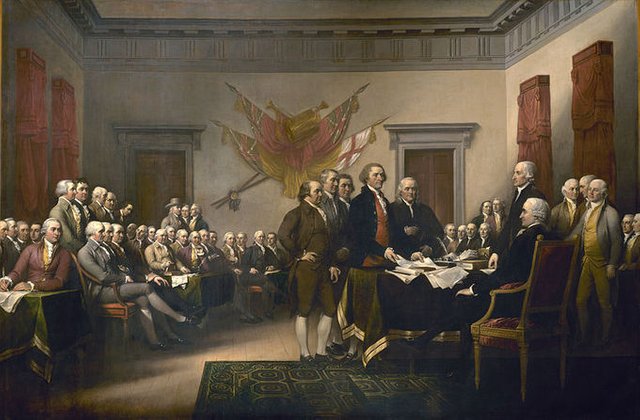
July 4th, 1776. The Second Continental Congress agree upon The Declaration of Independence, officially breaking away from the governance of Great Britain and King George III; whilst simultaneously issuing within it what some have proclaimed to be one of the best known sentences in the English language. It is also one of the most hotly debated over. Most Americans know the words by heart, or did at some point in school at least. Take a moment, can you remember it word for word if you know which phrase it is? The second sentence of the Declaration states:
"We hold these truths to be self-evident, that all men are created equal, that they are endowed by their Creator with certain unalienable Rights, that among these are Life, Liberty and the pursuit of Happiness."
Powerful words; noble, just and morally solid no doubt. "Honest" Abe Lincoln even centered it around the core of his political ideals, using its philosophy of all men being created equal most notably for The Gettysburg address. He continually debated throughout his career that it is the statement of principles through which the United States Constitution should be viewed. His reasoning for advocating this view so fervently is two-fold; one being the words were a perfect message for the nation during the civil war. Second, and more importantly to this conversation, these words never appear in the US Constitution, nor in the Bill of Rights.
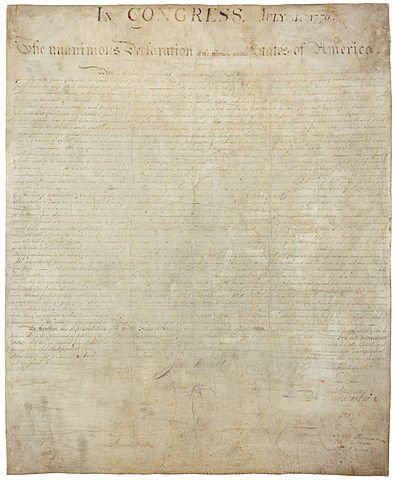
The Declaration of Independence is not a legal document, and therefore does not grant legal rights such as The Constitution or Bill of Rights.
A highly publicized reason this phrase is so controversial these days is its relationship to the Second Amendment. One of the most debated issues across the country, guns are about as American as apple pie. Arguably more. Engaging in a civil discussion with either side quickly reveals a glaring issue with the debate though. Beyond an apparent vitriolic tribalism to one side or another within the noise, is a lack of understanding.
In order to fully comprehend the issue one must understand a small library's worth of factors involved, making it difficult to be versed in every aspect due to the grand scale of information required. A key part, that rarely seems to be attempted to be understood, is the long history of what the Second Amendment is all about; "The right to bear arms". Many people in The States believe this phrase first appeared in legal form as the Second Amendment to the United States Bill of Rights, but you need to go back almost seven hundred more years for its first legal print under the English King William I in 1101. It is in the 1689 English Bill of Rights that resides the inspiration for the Second Amendment.
King James the II - Responsible For The English Bill of Rights (Against Catholics).
King James II took power when his brother Charles II died in 1685. Charles II had been a devote Protestant his entire life until he converted to Catholicism on his deathbed, which at the time had few fans in England. James was a fairly progressive king when looked at for face value. He promoted religious freedom, having been a Catholic for 17 years by then under Protestant rule, and gave many Catholics positions within state. The issue with this is that when looked at deeper; James was an authoritarian who silenced the press, completely ignored laws, and was equally guilty of persecuting religious opponents. James is a complicated character in history; doing some seemingly good things, but not always seemingly for good reasons and vice versa depending on your views.
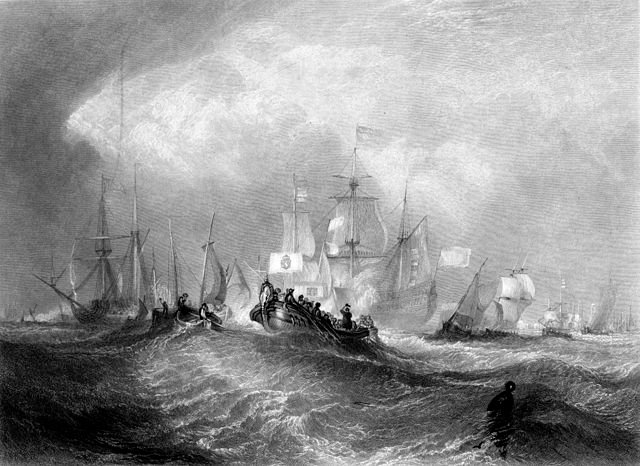
William of Orange lands at Torbay
In 1689 James was deposed, forcibly being abdicated and fleeing from Britain to France after his cousin William III sailed from the Dutch Republic to invade. William of Orange was invited at the behest of a group of Protestant nobles and was greeted by more nobles joining against James in what became known as the Great Revolution. Of the things that have been attributed to James by people through the years, that he took arms away from the Protestants perhaps stands out the most. This accusation could presumably be the catalyst of the debate on arms control, though there is no direct evidence of said accusations. None that is, save a single mention in a book titled, The State of the Protestants in Ireland under King James's Government written by The Most Reverend, William King; Archbishop of Dublin, Primate of Ireland - Dated 1691. A Protestant and avid supporter of the Glorious Revolution in 1689, King wrote the book (an entire volume berating James II's reign and Catholicism) while James II was still fighting in hopes to regain his throne in Ireland. The claims are never explained further, nor mentioned in any other contemporary document, leading me personally to believe the accusations as propaganda for the time.
When King William III and Queen Mary II took the throne in 1689, they agreed to signing into law the English Bill of Rights. The United States gets much of its inspiration for their own Constitution and Bill of Rights from the document. In it the Parliament states and codified:
"Protestants may have arms for their defence suitable to their conditions and as allowed by law"
Which is arguably due to James violating this common law (different from civil law, which the Bill of Rights would make it afterwards) of the time:
"keeping a standing army in time of peace, unless it be with consent of Parliament, is against law"
The Protestants were terrified that James wanted to perform a Catholic takeover of the country, slandering him to the point its hard to tell what his true intentions were. The libel going to the point even of decrying that his last child was a "Changling" ... a mystical creature. The newly convened "Protestants-Only" Parliament of 1695 passed (this is the literal statues name) “An Act for the better securing the government, by disarming Papists”. This was most likely retaliation against the Irish Catholics who sheltered James before he fled from there as well back to France. This was yet another case of the Catholics being disarmed, happening before in 1613 with King James I who ordered all Catholics disarmed. Again, there is little hard evidence of said actions except a few vague references in declarations from the time. It seems more in line with the continual propaganda war waged between the two Christian sects since the beginning of Protestantism.
Protestants and Catholics - Same Thing Different Name Gone Way Too Far
That may be a little inaccurate. Saying they are the same thing is like saying an orange is the same thing as a tangerine. Their very similar, but have key differences easy to spot when put side by side. This would be ill-advised though, as the Oranges (Protestants) wanted to murder the Tangerines (Catholics) and vice versa in the 1600s. Explaining the whole history of why this was would take a whole series of books in and of itself. To attempt to summarize, Protestants wanted to break away from the Roman Catholic Church by the end of the 14th century and go back to the roots of spirituality - rather than wealth and power. The Roman Catholic Church responded violently in 1546, as was their tendency against those they labeled as Heretics, but could not fully squelch the insurgent sect that had spread through Europe like fire by then. While at the climax of the Catholic's campaign, Muslim Turks attacked Vienna forcing the Catholics to divide their attention and resources, the priority going to Vienna. Had it not been for this attack Protestantism may have been wiped out across Europe, but with the lessening of pressure it took root and flourished.
In England - Religious Political Governance
Protestantism would become both the dominant cultural religion in Europe as well as the political over time. King Henry VIII began the English's path by continually undermining the authority of the Catholic Church from 1509 to 1547. Henry's reason was for personal gain, namely his numerous amount of marriages which was against Catholic law, rather than his overall religious morals. Henry was a firm believer in Catholicism but conflicted with the Pope over his first marriage which would initiate the English Reformation and the Church of England, giving Protestants a strong foot hold within English lands. After his reign, England for another decade would revert from one sect to the other with their politics over two monarchs. Queen Elizabeth (1558-1603) would attempt the diplomatic middle ground throughout her early reign. Her personal alignments favored the Protestants at home with the newer Puritan sect radicals being excluded from her sympathies. Her later years cemented a lasting Protestant population within England and its lands. By the end of her reign she had openly supported Protestant rebellions in the Netherlands and provoked Catholic Spain into open conflict. Elizabeth's support of Protestantism would start the trend of Catholic and Protestant rebellions inside Britain as well as royal assassination attempts for generations.
Charles II - Turning The Boiler To High
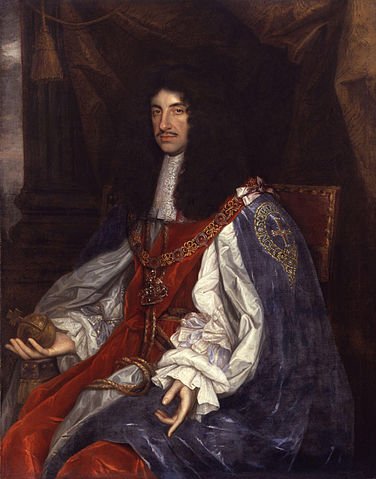
King Charles the II
Catholics would be blamed - rightfully so in certain cases - and martyred across Britain for numerous incidents for nearly the next one hundred years. Included are events such as the Gunpowder Plot (a Catholic assassination attempt on James I in 1605), The Great Fire of London (blamed on Catholics) as well as an uncountable number of small "Papish Plots". Charles II's reign (1650; exiled, 1660-1685 reigned in England) came after a nine-year exile in France which would influence him and his brother, to-be-successor James II, in their views on Catholicism. Born and raised a Protestant, he re-established the Church of England's authority in Parliament after the English Civil War deposed his father by execution. Charles II was a devote Protestant his whole life, but favored religious tolerance and freedom, and despised being pressed into the Clarendon Code by Parliament. In 1672 he introduced the Royal Declaration of Indulgence in response which increased recent fears of a Catholic take over, both of the Monarchy and Parliament. Parliament forced Charles to withdraw the declaration, on grounds of his Catholic sympathies. Later that year the Treaty of Dover was revealed when he openly backed Catholic French ruler Louis XIV and started the Third Anglo-Dutch War (1672-1674). Parliament again would intervene, forcing Charles to abandon the war effort in continuing fear of it being a plot to make England Roman Catholic.
Parliament, petrified by their own shadows of Catholic plots, put The Test Acts in place February 4th, 1673. "An act for preventing dangers which may happen from popish recusants" being the full official title. They enjoyed their titles back then. The Test Acts were designed for a singular purpose. Ensure Catholics were not able to ascend to Parliament or any public office. The Act made appointees to office swear the following:
"I, (Name and Titles), do declare that I do believe that there is not any transubstantiation in the sacrament of the Lord's Supper, or in the elements of the bread and wine, at or after the consecration thereof by any person whatsoever."
While archaic in its wording, its pretty simple to translate really. "I, (Name and Titles), don't believe or partake in Catholic rituals, and am not a Catholic or a non-conformist."
1679's "Popish Plot" revealed to all that Charles' brother, James Duke of York, was a Catholic. The Exclusion Crisis that came about produced the Whig (exclusionist) and Tory (non-exclusionist) parties in Parliament, being split between support for Charles and the pressing worry of his succession. Beyond the new Parliamentary parties, it would begin the new chain of events leading to the Glorious Revolution and the Bill of Rights. Charles dissolved the English Parliament not only once that year of 1679 but twice, setting a precedent with disastrous consequences to come for Catholics. The first dissolution came early in the year to protect Lord Danby, his chief minister, from impeachment for abiding by Charles' wishes towards France, even while Danby had his own qualms with those wishes. By mid year he would disband it for the second time to block the passage of the Exclusion Bill, designed to stop James from succession to the throne. Charles, now just days past his 49th birthday, still had no direct heirs which drove Protestants to near hysteria.
Charles would assemble one more Parliament at Oxford in 1681, only to dissolve it yet again after a mere few days. Encouraged by a rise in personal support across the nation, Charles decided to reign without another Parliament until his death on February 2nd 1685. His brother James II, whom parliament had tried so desperately to block from ascending to the throne, would do just that and turn the nation completely on its head.
James II - Short Reign, Long Lasting Consequences
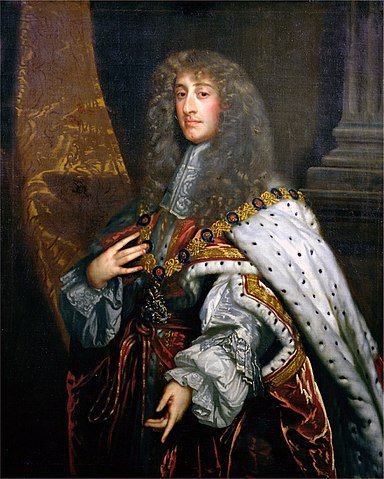
King James the II
From nearly the moment James II took the throne his reign was faced with rebellion. Crowned in April with public reports of rejoice and celebration, by May there was armed conflict with Protestants. The Duke of Monmouth - James' nephew - in the south and the Earl of Argyll in Scotland to the north. Both rebellions were coordinated between the two lords to strike simultaneously, but had little impact due to poor planning and were defeated with ease. The rebellions posed little threat on their own but would give James the unforgivable thought of raising and increasing a standing army for his safety. Parliament was beside themselves with this act alone, the practice of having a standing army in peace times being seen as a tyrannical breach of traditions. James stepped over the line though when he appointed several Roman Catholics to command a number of regiments in his new army - without haven taken the oaths of The Test Act. His Parliament till now had supported James, but objected thoroughly to these measures. As a result, James took a lesson from his late brother Charles II and dissolved Parliament. James wouldn't assemble them again like his brother had - though attempting to once - and would reign without Parliament the remainder of his short stay on the throne.
James, free of opposition from Parliament, opened the flood gates to Catholics for office; allowing occupation of the highest seats in the lands. Catholics were by and far a tiny minority of the population in England during this time, Protestantism in England having firmly ruled after separating from the Catholic Church. James' absolving of Parliament did not sit well among the populace like his brother's had. James did not seem to be bothered by this, as shown by his continual dismissal of judges and dissenters to his policies. Free from the cumbersome burdens of things like Parliament and judges, James in 87 reissued the Declaration of Indulgence as well as began the plans to build a Parliament built from among his supporters. That Parliament would never form, a more pressing issue taking James' attention in late 1688. Revolt, invasion and abdication.
The Glorious Revolution
When James reissued the Declaration of Indulgence seven Bishops petitioned against the requirement for it to be read aloud in their churches.
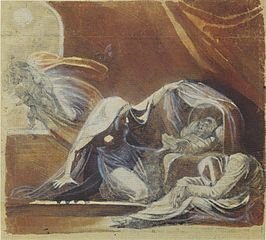
A Changling From Lore
He had them arrested and tried on grounds of Seditious Libel, another issue echoing throughout the ages to today. The birth of his Roman Catholic son though is what drove hysteria about the Catholics finally taking over. Protestants attempted any form of propaganda against the new heir including legitimately attempting to claim he was a "Changling" or creature from myth.
In a time where separation of church and state was a blasphemous thought - rather than a progressive one - across Europe, James' ideas of tolerance and opposite actions towards Protestants - in their view - weren't taken lightly by the Church of England or its followers. In June of 88 Protestant nobles invited Prince William of Orange in the Dutch Republic to land on English soil with an invasion force to depose James. Upon William's landing a number of Protestant nobles defected to his side, abandoning James. James, not wanting bloodshed, fled to France rather than engage William despite still having the superior numbers. James' reasoning for fleeing differs between historians; some claiming cowardice and others nobility. The smear campaign of James by Protestants that ensued after his abdication makes it difficult to tell for sure.
Soon to be crowned William III's first act established a Parliament who quickly proceeded to declare that James, having fled to France and abandoning the Great Seal in the process, had abdicated the throne. The Parliament immediately crowned James' daughter, being William's wife, Mary Queen to rule beside her husband who would become the King. Before the end of the year 1689, the new Parliament would pass and codify the English Bill of Rights. In the bill, not only did Parliament bar Roman Catholics from access to the English Throne and disallow the Monarch to marry a Roman Catholic; it stated: "Protestants may have arms for their defence suitable to their conditions and as allowed by law."
William would only rule a few years until his death in 1702, when James' youngest daughter Anne would succeed. Her death, again shortly after - 1714 - saw a small crisis in the line of succession introduced by the Act of Settlement and the Bill of Rights. There were no direct Protestant heirs to Anne, and the closest heir of lineage - German cousin Sophia, Electress of Hanover - had died less than two months prior. The crown was inherited by George I, Sophia's son, through the Protestant lineage back to James I by way of a typically mind-bending family tree for the time. George I is getting ahead of ourselves though, and will be discussed more in the next article.
So what's the point?
Confused about what this has to do with gun control? That kind of is the point. The first laws about "the right to bear arms" had little to do with actually bearing weapons and more to do with religious authority and political power. The statutes, unlike in different areas of the world, never mention what arms are to be bear-ed. They were created in an era where religious propagandists and zealots ruled over and persecuted those of separate beliefs. Governance was dictated by the church or those high within it holding seats in the government which came with their own form of "arms" - A Coat of Arms. In fact, religiosity was a requirement to be in office, and one of the things that fueled Protestants claims about James II authoritarianism. The relevance of these past actions and properties has been lost in the modern conversation seemingly.
Of course, this is but a grain of sand - as large as our own entire grain of 200 years - on a beach of context in history; and merely the tip of the Protestant and Catholic struggle. The full history is vicious, bloody, and often executions were transformed into public spectacles of amusement. Dan Carlin's, Hardcore History; Painfotainment is not about gun control, but is a fascinating (yet graphic) listen about death as entertainment for the masses. It traces the history back to the Colosseum, with a highlight about Protestant and Catholics (1:39:58, 1:32:20 for extra context). It's full length is four and a half hours, so brew a pot of coffee and settle in if you're going to listen to the whole thing. It gives a great insight to the thoughts of how the masses felt about the religious persecutions of the times for just a touch more context about the conflicts.
Meanwhile in History...
Across the Pond - The English Colonies
Catholics, Protestants, and Puritans in the Colonies. "Puritans, a people so uptight the English kicked them out." - Robin Williams
Puritans, a radical offshoot of Protestantism, came to the Americas to escape the religious prosecution of the Church of England. Not long after the colonies were established Puritans ended up committing the same transgressions perpetrated on them by the Church upon the settlers. Puritans were so strict in their observance of the religious doctrine both the Protestants and Catholics wanted nothing to do with them. Roger Williams was a Puritan minister and was tossed from the Massachusetts Bay Colony in 1636 for preaching "new and dangerous ideas". Religious liberty, equal dealings and fair trade with the Natives and, most damning, separation of church and state were the dangerous ideas he preached. Puritan officials were threatened by these thoughts, the Church not wanting other competitors in the colonies to their ideas. Their need for religious uniformity in government mirrored what most had come to the colonies to escape. Williams would go on to found Rhode Island on the principle of Religious Freedom, and organize the first attempt to outlaw slavery in the Colonies among many great deeds. By the end of the 17th century Puritanism essentially devoured itself and would begin to give way to Protestantism, Catholicism and new Judaeo-Christian faiths.
17th Century Colonial Gun Legislation

The colonies had plenty of their own regulations, separate from England, on weapons and arms throughout the 1600's. This is where the debate in modern-day tends to start getting heated. Many aspects about gun culture and regulation are conjectured on by experts, with few fully agreeing on numerous issues. A generally popularized view is that muskets were common for hunting during the settling of the colonies, which is both true and false. Its unlikely muskets were the primary hunting tool for colonists. Cumbersome, noisy, slow and inaccurate past a short distance; muskets were poor choices of weaponry for hunting game. Bows had fallen out of military use almost completely by now, but many hunters still employed the tool over the musket for its overall efficiency in regular hunting. Hard to fully prove either way due to lack of written information from the general public, what is easier to prove is that both weapons and arms were common in Colonist law. Beyond being common, the laws were fairly straight-forward in their intent.
Maryland stated in their statute "An Act for Military Discipline" of 1638:
"Every house keeper or housekeepers within this Province shall have ready continually upon all occasions within his her or their house for him or themselves and for every person within his her or their house able to bear armes[,] one Serviceable fixed gunne of bastard muskett boare...” along with a pound of gunpowder, four pounds of pistol or musket shot, “match for matchlocks and of flints for firelocks....
Experts have long argued vehemently over whether firearms were stored within central store houses or with the private individuals themselves. Maryland's statute seems relatively clear on this point though, stating "within his her or their house". While there were plenty of storehouses for firearms in settlements, the statutes from this time seem to show, at least in the legal documents, most firearms were kept by the individuals and not in community stores. Stipulating this was the case, the private ownership may have aided in the success of the rebellions against the British that were to come for the next century. Further supporting the idea that they were stored with individuals is a statute from Virginia in 1642.
“No man to discharge 3 guns within the space of ¼ hour... except to give or answer alarm.”
In 1655 they further prohibited discharging “any guns at drinkeing (marriages and funerals onely excepted)”. Gun fire, in this period, being the usual alarm for an attack from the Natives against the settlers. In part this could be because the colonies had their share of irresponsible use as well. A transcript of a sentencing from 1684 for erroneous discharge of a firearm shows:
"1 July 1684 Robert Trayes of Scituate, described as a "negro," was indicted for firing a gun at the door of Richard Standlake, thereby wounding and shattering the leg of Daniel Standlake, which occasioned his death. The jury found the death of Daniel Standlake by, "misadventure", and the defendant, now called "negro, John Trayes", was cleared with admonition and fine of £5."
Connecticut's militia code in 1650 is a clear indicator that firearms were stored with individuals to most. It stated clearly:
"That all persons that are above the age of sixteene yeares, except magistrates and church officers, shall beare arms...; and every male person with this jurisdiction, aboe the said age, shall have in continuall readiness, a good muskitt or other gunn, fitt for service, and allowed by the clark of the band..." Fines were issued to for not appearing with firearms "compleat and well fixt upon the days of training..."
Connecticut's code, as well as Maryland's 1638 Act, are seemingly completely clear in their wording. As clear as they seem, they could be hiding the perfect example of how the term "to bear arms" is possibly supposed to be taken. A grand tradition spanning hundreds of years throughout all of Europe was practically abandoned en mass by the colonist settlers. The bearing of a Coat of Arms.
The Coat of Arms - A Major Misunderstanding?
Here is the major difference to this point in the legislatures. In England and elsewhere across Europe, your "arms" referred to your "Coat of Arms". This was the probable cause of the wording for the English Bill of Rights' "to bear arms", as there is no credible evidence of James I or II taking weapons of any kind from the populace (that I personally can find).
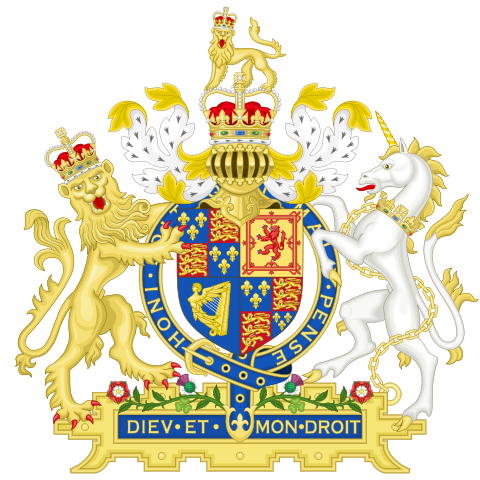
King of England's Coat of Arms under James II
There is evidence abound however of James the II's striping of offices; which in turn stripped the holder of their power and "Arms" associated with the position - as only one person may use it at a time. The bills intention may be stating that an entire population of Protestants can be considered able to bear a coat of arms, within the condition that its lawful. Which would be when you adhered to the Oath of Supremacy and the Test Acts under the precedent the Bill of Rights was established by.
This is supported by the legislature within the colonies, referring to the weapons themselves rather than a general statement of "arms". The "Coat of Arms" was nearly non-existent in the colonies compared to firearms which were, as shown, fairly commonplace. Maryland and Connecticut's statements could be said that the term "able to bear armes" refers to the unwritten code of Heraldry. In which (basically); a coat of arms is considered property of sorts, and Undifferenced Arms are to be used by only one person at a time. Descendants were able to bear the ancestors Arms after it's owner had passed and the arms had undergone a slight difference. This is further evidenced by stating the required equipment afterward in writing, rather than just leaving it at the bearing of arms. The wording was likely used to describe eligibility of service and ensure sufficient numbers of militia men. This, however, is purely my own speculation on the Coat of Arms.
The Start of a New Era - The Road to Revolution.
1689 was the beginning of warfare between the English and the French that used North America as one of several theaters and the colonist militias as support troops. King William's War, the colonies theater of the Nine Year War (1688-1697), started when James II fled to France and was fought between France Catholic colonists and English Protestant colonists. The war in North America was mainly over the fur trade and influence with the native tribes. This conflict would start a cycle of militias and scouts being employed from volunteers within the colonist settlers. The British Regulars and Navy handled international wars, but the theater was unimportant to the statesmen of England and focused their armies elsewhere. The English out numbered the French nearly thirteen-to-one, mostly supplemented from the colonist militias, yet were on the defensive for the majority of the conflict. The English colonists had their own problems to deal with in the backlash of the Great Revolution. Lasting until 1697 in the colonies, King William's War would be one among many conflicts to erupt in the colonies in the period, and the set up for those to come after it.
Numerous rebellions within the colonies would start against the arbitrary governance of England, which over the next hundred years would evolve to become The American Revolution. Part two will look at the effect these conflicts had on the colonists and their growing tension with Britain. As tensions rise, the British annoyance with the rebellious colonists prompt attempts to take away their weapons, starting the ignition of The Revolutionary War...
(Posted from my site, A Different Angle. Original Posting: http://adifferentangle.blog/2018/05/07/gun-control-established-1600)
Nice post!
Gun control is a crucial thing to do in order to save mankind and humanity. Big nations should anticipate its casualties in near future.
In my opinion, every citizen should be able to carry a gun. Regulations will just reduce access to guns for ordinary people, the "bad guys" will have access to guns anyway.
The interesting thing from the statistics is that in the States with guns "freedom" the amount of gun related crimes is lower than in states where owning a gun is not permitted.
Congratulations @adamkent! You received a personal award!
You can view your badges on your Steem Board and compare to others on the Steem Ranking
Do not miss the last post from @steemitboard:
Vote for @Steemitboard as a witness to get one more award and increased upvotes!